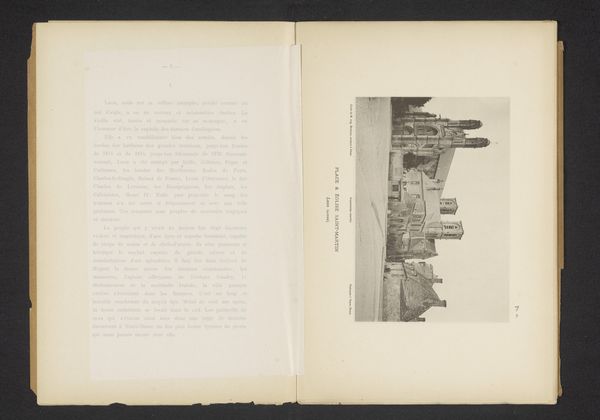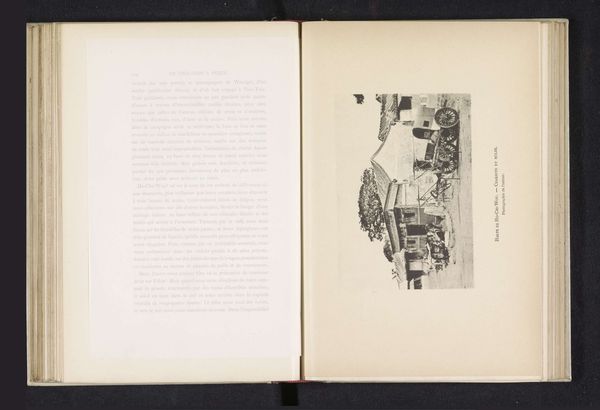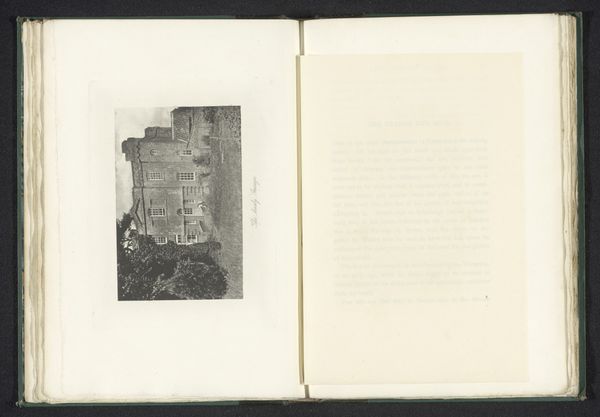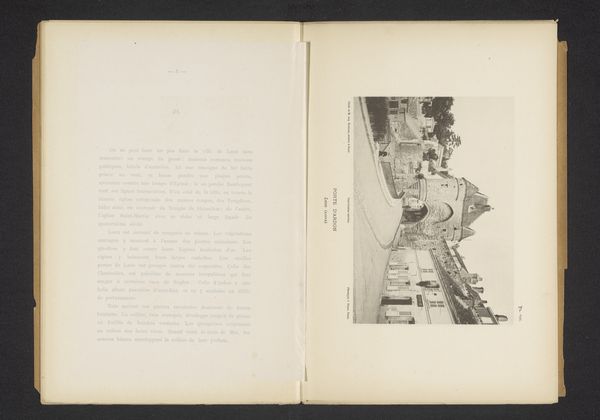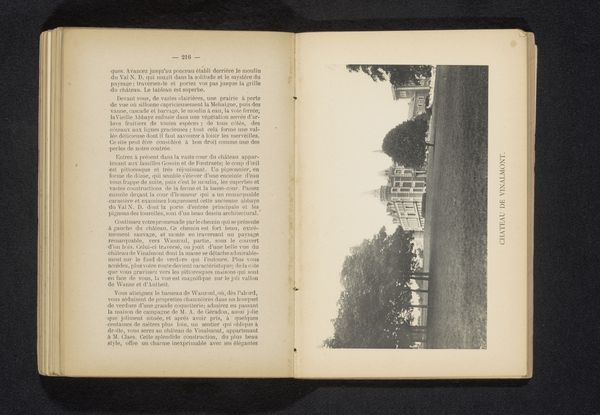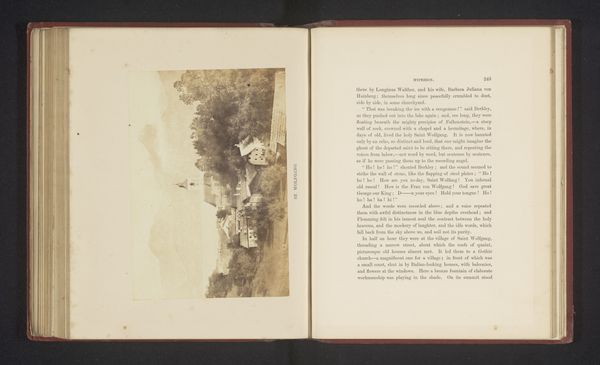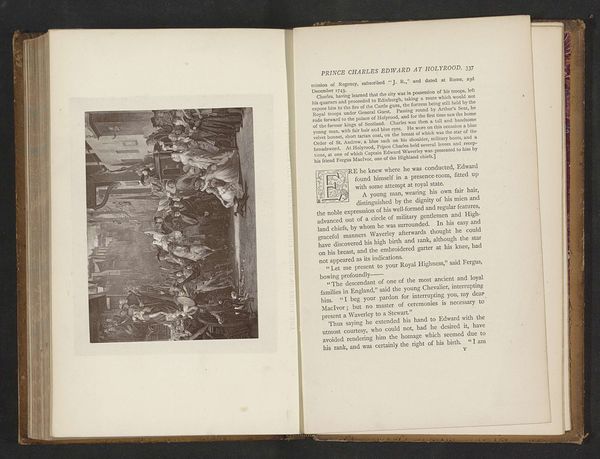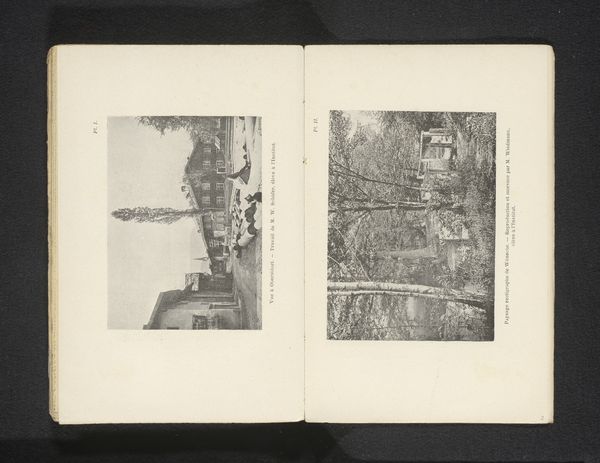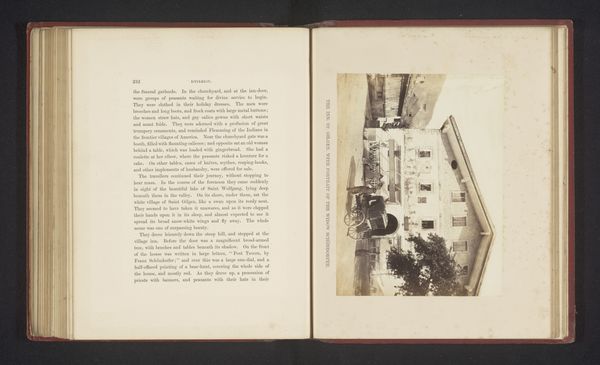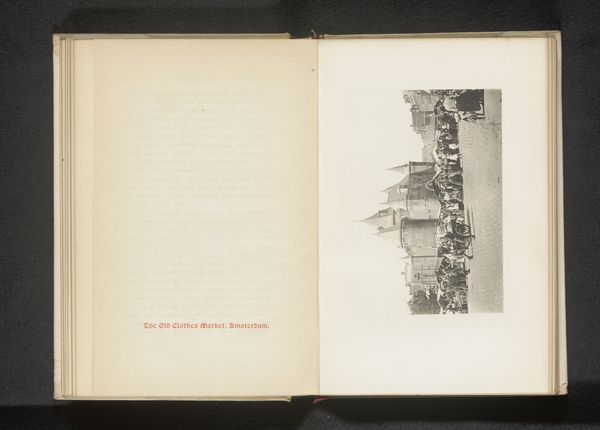
print, photography
#
aged paper
#
homemade paper
#
paper non-digital material
#
paperlike
# print
#
sketch book
#
landscape
#
paper texture
#
photography
#
personal sketchbook
#
thick font
#
cityscape
#
paper medium
#
historical font
Dimensions: height 120 mm, width 171 mm
Copyright: Rijks Museum: Open Domain
Editor: So, here we have a print of the Château de Chantilly as seen from the garden side. It's dated before 1891 and credited to H. Rouxel. What strikes me is its almost dreamlike quality, even though it's a landscape. What symbolic weight do you think this image might carry? Curator: It's a fascinating question, because a chateau, like Chantilly, isn’t just a building. It’s an emblem of power, of history, and often, of a very specific cultural memory. Notice how the garden is presented as an extension of the Chateau. It isn’t wild, but cultivated. This visual suggests a certain taming of nature, reflecting a desire for order and control deeply rooted in aristocratic identity. Editor: That’s interesting. So, the Chateau becomes a symbol of social hierarchy and control, visually represented through its architecture and gardens? Curator: Precisely. And look closer—isn't there a stillness? An almost romantic melancholy. Consider, too, the symbolism of water – reflecting, mirroring, hinting at hidden depths, emotional undercurrents... It invites contemplation on mortality and the ephemeral nature of power. Editor: So the symbols in this landscape aren't just architectural; the whole composition is laden with meanings about power and legacy. Do you think this interpretation would resonate with viewers at the time? Curator: Undoubtedly. Representations of grand estates functioned as visual assertions of authority and timelessness. Recognizing these embedded cultural values invites us to reconsider what we project onto landscapes today. What about the text? Do you notice anything symbolic in that? Editor: The historical font really underscores its belonging to the past, adding a layer of officialdom, like a document to preserve an ideal. Thinking about the persistence of these kinds of images, how they carry forward ideas about status, has really broadened my understanding of the piece. Curator: And for me, your youthful, inquisitive perspective has unveiled aspects of its inherent meaning that I hadn’t fully considered before. A wonderful exchange.
Comments
No comments
Be the first to comment and join the conversation on the ultimate creative platform.
